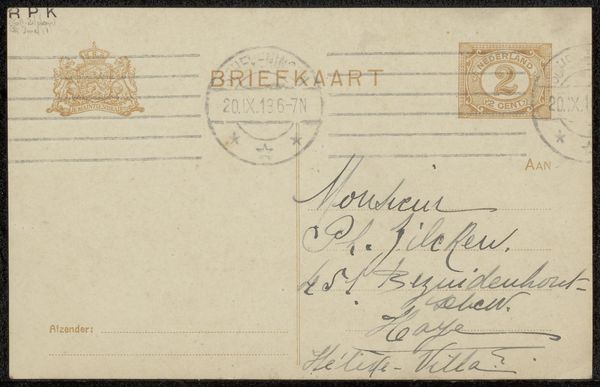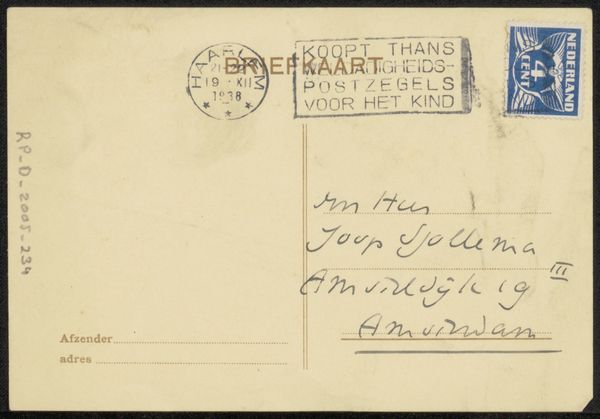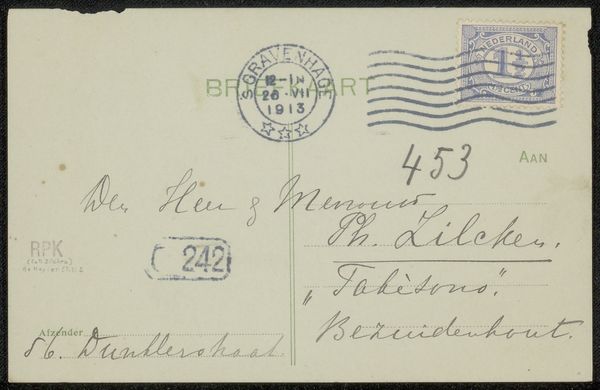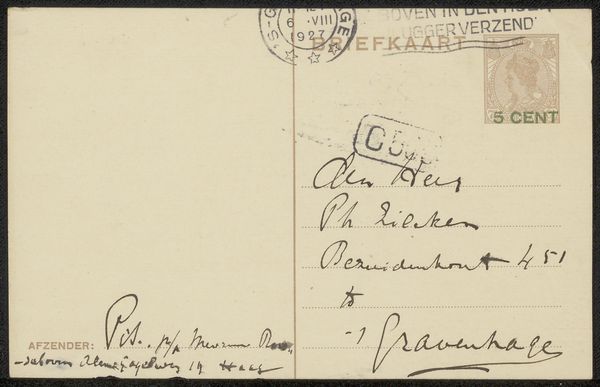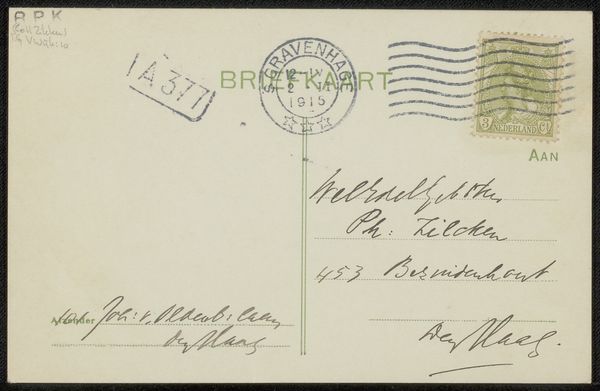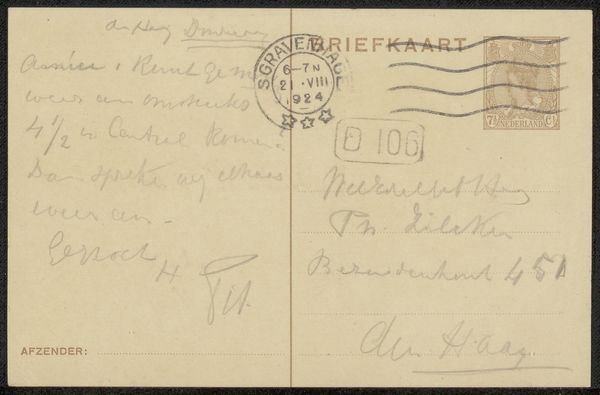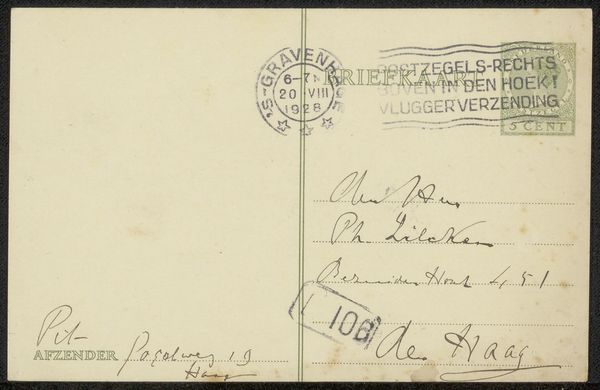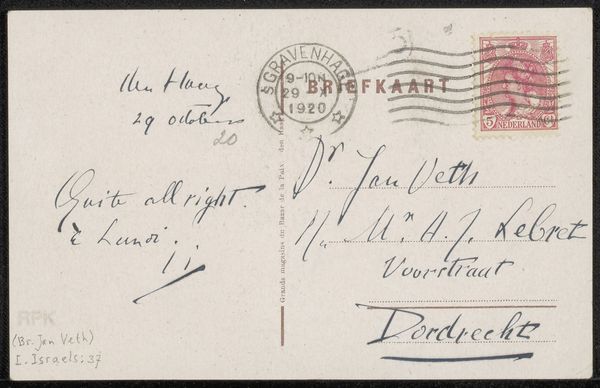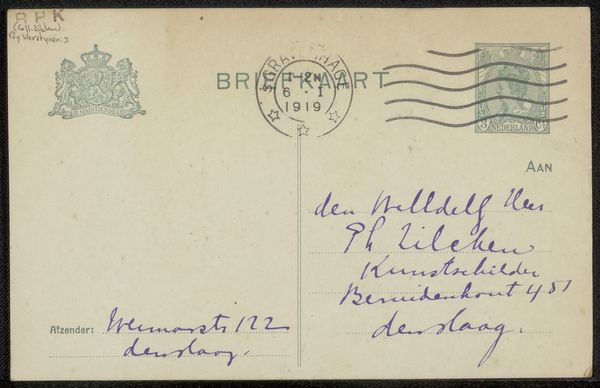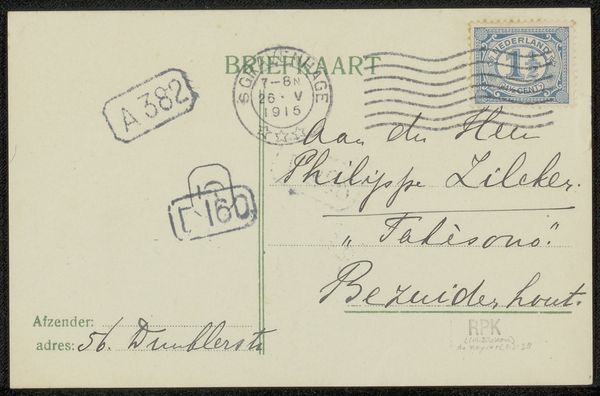
drawing, paper, ink
#
portrait
#
drawing
#
hand-lettering
#
hand drawn type
#
hand lettering
#
paper
#
personal sketchbook
#
ink
#
sketchbook drawing
#
modernism
Copyright: Rijks Museum: Open Domain
Curator: This unassuming item is a postcard titled “Briefkaart aan Philip Zilcken,” likely created between 1925 and 1927. It resides here at the Rijksmuseum. Editor: It's strikingly simple, a monochrome study in texture. The eye is drawn immediately to the penned text contrasting with the flat surface. Curator: Indeed. We see the social practice of correspondence rendered with the simplest of tools: ink on paper, a mass produced card turned singular. It shows a Modernist fascination with efficiency. Editor: Let's break down that composition. The hand-lettering becomes a series of shapes—linear arrangements creating rhythm, note the contrast between blocky address text, versus more fluid lines of “'S Gravenhage”. It seems as considered as any formal study in calligraphy. Curator: Consider, also, that this wasn’t meant as 'high art.' Postcards are intrinsically functional and disposable. Its survival challenges those assumptions and demonstrates artistic consideration present in everyday exchange. The very act of sending is a critical aspect of the work. Editor: Absolutely. Yet, aesthetically, there's that carefully placed stamp, the neat rows of address lines creating a sort of minimalist grid. It speaks to an economy of means, pushing visual harmony even through functional items. Curator: Moreover, postcards connected individuals within existing infrastructures and are deeply related to questions of industrialization and accessibility of culture during this period. The back of a postcard becomes a space of personal expression amidst global circulation. Editor: Its formal tension balances between design and pure function and hints at Modernism, this item becomes an example of intimate public interaction through visual means. It certainly makes me reflect on its lasting impact. Curator: It reminds us that the everyday object is fertile ground for both the artist’s exploration of their immediate material conditions and human interaction within technological advancement.
Comments
No comments
Be the first to comment and join the conversation on the ultimate creative platform.

